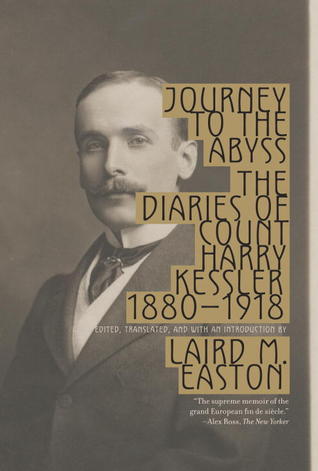What do you think?
Rate this book


960 pages, Paperback
First published January 1, 2011
How certain I am that I belong to this earth, that my dust will merge into the branches and blossoms and will continue the silent, majestic journey through eternity. The stars will look down for untold millennia and I too will be a part of the cosmos, small but eternal like God. And I too have known happiness.
—Florence, 1 Aug 1898
In the evening the Strand, Piccadilly. The great elemental phenomena that have moved me deeply: the sea, the mob, only then mountains, streams, plains, stretches of the sky. The metropolis contains the same poison of longing as does the sea. The same mobile melancholy, dreamy, objectless melancholy.
—London, 20 Apr 1903
All around the world war rages and in the centre is this nervous city in which so much presses and shoves, so many people and streets and lights and colours and interests: politics and music hall, business and yet also art, field grey, privy councillors, chansonettes, and right and left, and up and down, somewhere, very far away, the trenches, regiments storming over to attack, the dying, submarines, zeppelins, airplane squadrons, columns marching on muddy streets, Hindenburg and Ludendorff, victories; Riga, Constantinople, the Isonzo, Flanders, the Russian Revolution, America, the Anzacs and the poilus, the pacifists and the wild newspaper people. And all ending up in the half-darkened Friedrichstrasse, filled with people at night, unconquerable, never to be reached by Cossacks, Gurkhas, Chasseurs d’Afrique, Bersaglieris, and cowboys, still not yet dishonored, despite the prostitutes who pass by. … That’s the world war, all right.
—Berlin, 18 Nov 1917
Who can work hard for ten hours a day as an official and remain a human being, with heart and feeling, taste, culture, and humanity? If you put pure Bismarcks and Goethes in the offices and factories, after ten years they would be the same as our current technicians and officials: machines. … Bureaucratization, which is a consequences of the number of hours you work in an office, is the key question—whether you want to have creative people who participate in life, and not dried-up old mummies as rulers. No leading official should have to work more than four hours a day; to do more should be punishable.
—3 Jul 1918
